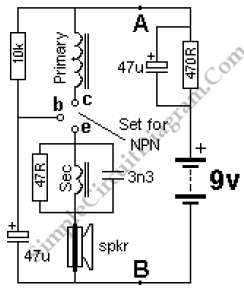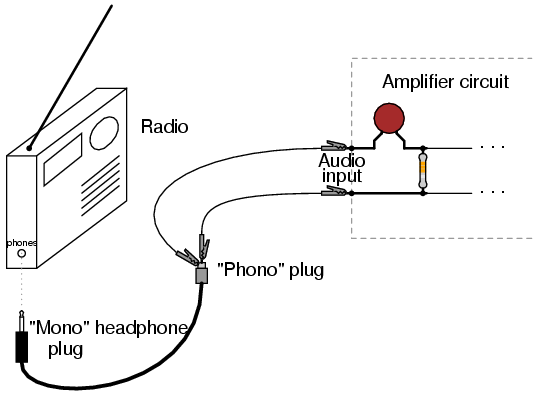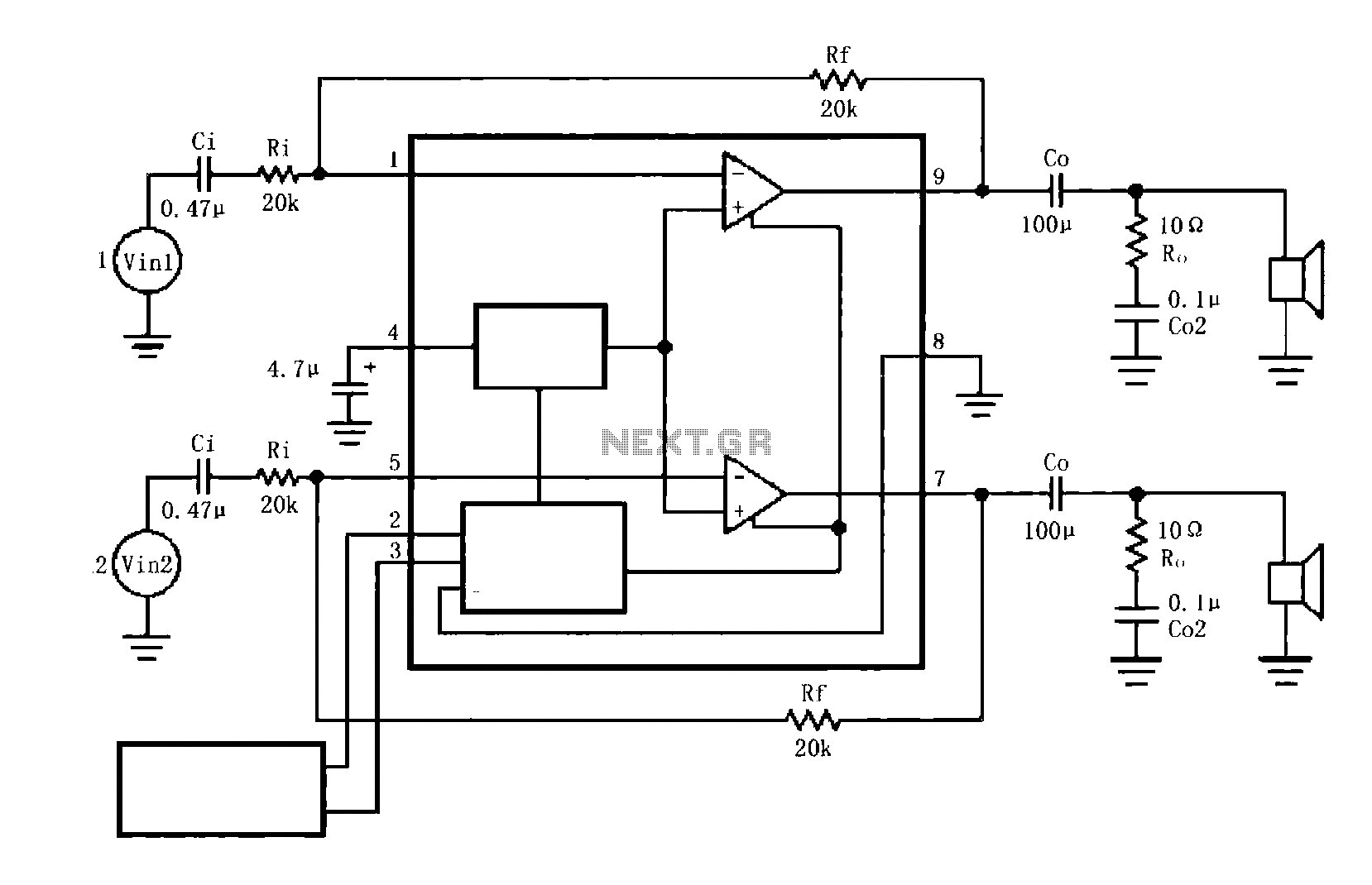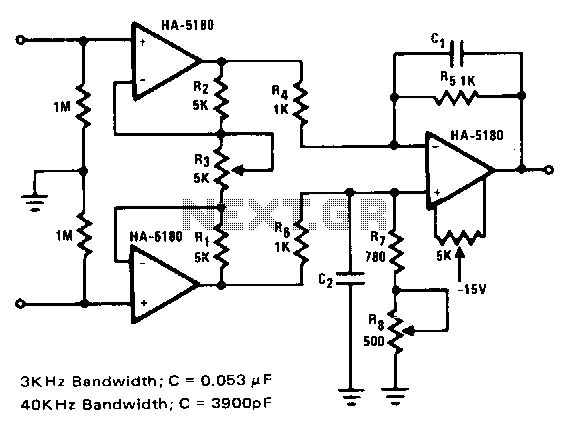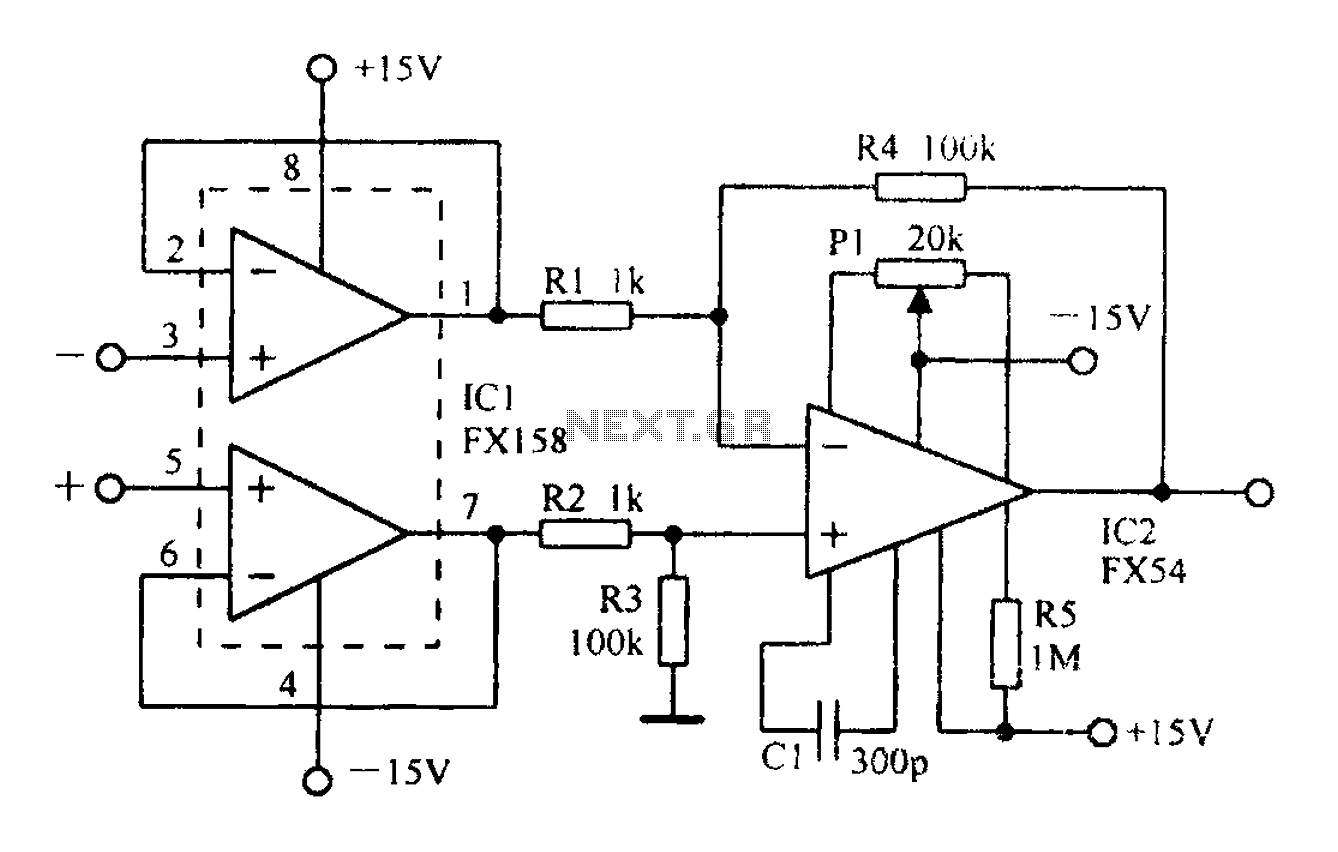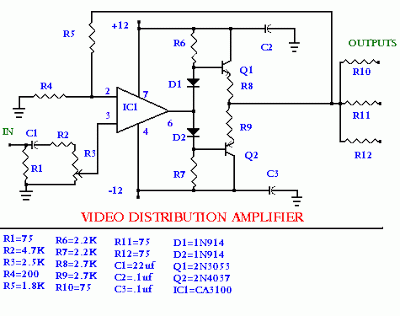
Small transistor amplifier Ideals
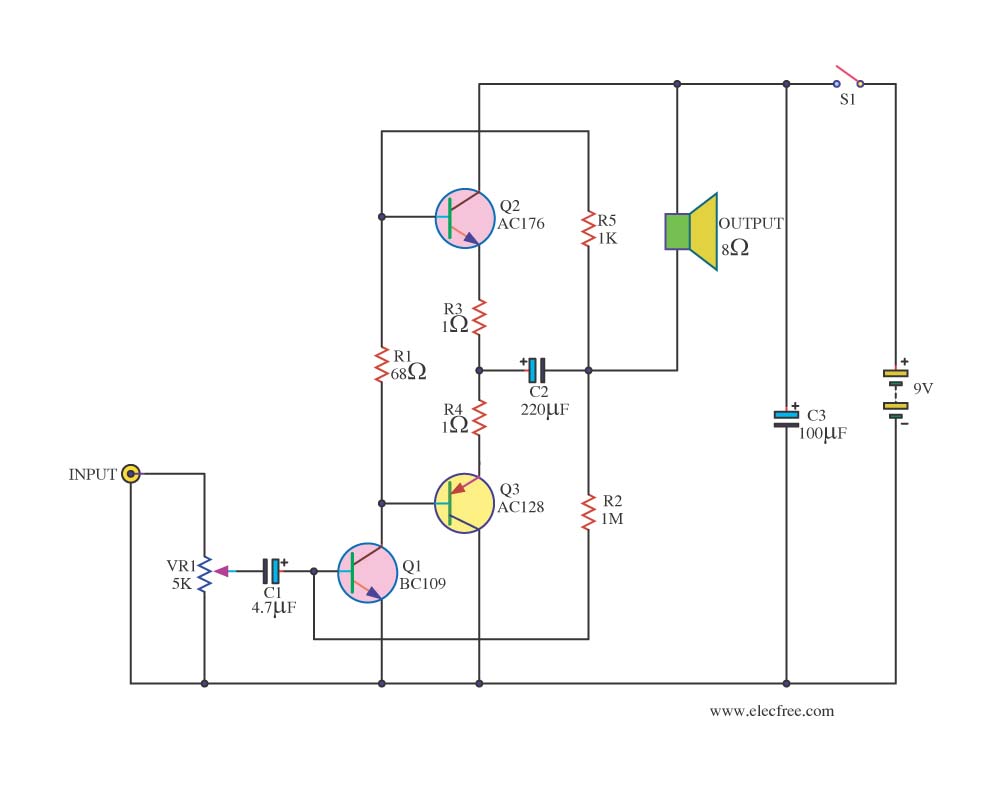
Integrated circuits (ICs) are commonly utilized in various audio amplifiers, particularly in compact circuits. While transistors are convenient alternatives, they offer several advantages, such as the ability to repurpose old equipment to create smaller circuits, which may be harder to source than ICs. This circuit is applicable to low-impedance sound sources, such as 4-16 ohm loudspeakers or telephone earphones, which can be used in place of a microphone. When using a loudspeaker, the output can be sufficient for sound checking in dynamic environments. The output of this circuit can be fed into a high-power amplifier. An individual named Mr. Somsak, who has a keen interest in building power amplifiers but lacks extensive electronic knowledge, was introduced to this simple project as a preliminary endeavor. This circuit is a simple output transformerless (OTL) power amplifier with a low wattage output, based on an older design. It utilizes transistors such as AC176, AC126, and BC109, along with a few additional components. The circuit operates on a 9V power supply. This small power amplifier is noted for its good audio quality and is classified as a Class AB amplifier suitable for high-fidelity applications. The components can deliver 2W continuously using an AC128 transistor with an 8-ohm load and can achieve a peak output of 5W, powered by a proper unregulated 9V supply.
This audio amplifier circuit is designed to provide a straightforward solution for audio amplification needs, particularly in situations where low power and compact size are critical. The use of transistors instead of integrated circuits allows for a simpler construction process, making it accessible for hobbyists or those new to electronics. The choice of components, such as the AC176 and AC126 transistors, ensures that the circuit can handle the required audio signals effectively while maintaining a small footprint.
The circuit's configuration allows it to interface with low-impedance sources, making it versatile for various applications, including driving small loudspeakers or earphones. The output transformerless design minimizes the size and weight of the amplifier, making it suitable for portable applications. The amplifier's Class AB operation provides a good balance between efficiency and audio fidelity, making it a popular choice for high-fidelity audio applications.
The power supply requirement of 9V is modest, allowing for the use of common battery types or simple power adapters. This feature enhances the circuit's usability in different settings, from DIY projects to educational demonstrations. The output capabilities of 2W continuous power and 5W peak power make it suitable for driving small speakers in personal audio setups or for use in experimental audio projects.
In summary, this simple OTL power amplifier circuit exemplifies an effective and efficient solution for audio amplification, leveraging the benefits of discrete transistors to achieve good sound quality in a compact design. It serves as an excellent introduction to audio electronics for beginners, providing a practical project that can yield satisfying results.ICs has been used in many audio amplifiers, especially small circuit. It is convenient to use transistors. But when you need to use transistors, it has several advantages, such as saving you can take old equipment come to made small circuits easier than the IC. Which may be difficult to find. Take a look at these circuits. Maybe you get t he idea of it. This circuit can apply to signal sound source that has low impedance, such as from 4-16 ohm size loudspeakers or telephone earphone that use to replace, Micro phone. If use a loudspeaker replaces the rapidity will enough in sound checking that has been born from walking.
The output this can feed reach input of high power amplifier the other next. Mr Somsak is my friend who like to make power amplifier so much. but he do not well electronic man. I so introduce he need make easy project before. This circuit is simple power amplifier OTL that mini watt output but is older circuit. They uses transistors example number are AC176, AC126 and BC109. which there has other a few components. They are used power Supply Voltage 9Volt only. I hope it will be once circuit so you like and well ideas. I find this in my old circuit electronics book. It is very a small power amplifier, but good quality audio class AB amplifier in hi-fi applications. The component capable of delivering 2W continuously an used the AC128 thansistor into a 8 ohm load and 5W peak. with the proper 9 volt unregulated power supply. 🔗 External reference
This audio amplifier circuit is designed to provide a straightforward solution for audio amplification needs, particularly in situations where low power and compact size are critical. The use of transistors instead of integrated circuits allows for a simpler construction process, making it accessible for hobbyists or those new to electronics. The choice of components, such as the AC176 and AC126 transistors, ensures that the circuit can handle the required audio signals effectively while maintaining a small footprint.
The circuit's configuration allows it to interface with low-impedance sources, making it versatile for various applications, including driving small loudspeakers or earphones. The output transformerless design minimizes the size and weight of the amplifier, making it suitable for portable applications. The amplifier's Class AB operation provides a good balance between efficiency and audio fidelity, making it a popular choice for high-fidelity audio applications.
The power supply requirement of 9V is modest, allowing for the use of common battery types or simple power adapters. This feature enhances the circuit's usability in different settings, from DIY projects to educational demonstrations. The output capabilities of 2W continuous power and 5W peak power make it suitable for driving small speakers in personal audio setups or for use in experimental audio projects.
In summary, this simple OTL power amplifier circuit exemplifies an effective and efficient solution for audio amplification, leveraging the benefits of discrete transistors to achieve good sound quality in a compact design. It serves as an excellent introduction to audio electronics for beginners, providing a practical project that can yield satisfying results.ICs has been used in many audio amplifiers, especially small circuit. It is convenient to use transistors. But when you need to use transistors, it has several advantages, such as saving you can take old equipment come to made small circuits easier than the IC. Which may be difficult to find. Take a look at these circuits. Maybe you get t he idea of it. This circuit can apply to signal sound source that has low impedance, such as from 4-16 ohm size loudspeakers or telephone earphone that use to replace, Micro phone. If use a loudspeaker replaces the rapidity will enough in sound checking that has been born from walking.
The output this can feed reach input of high power amplifier the other next. Mr Somsak is my friend who like to make power amplifier so much. but he do not well electronic man. I so introduce he need make easy project before. This circuit is simple power amplifier OTL that mini watt output but is older circuit. They uses transistors example number are AC176, AC126 and BC109. which there has other a few components. They are used power Supply Voltage 9Volt only. I hope it will be once circuit so you like and well ideas. I find this in my old circuit electronics book. It is very a small power amplifier, but good quality audio class AB amplifier in hi-fi applications. The component capable of delivering 2W continuously an used the AC128 thansistor into a 8 ohm load and 5W peak. with the proper 9 volt unregulated power supply. 🔗 External reference
